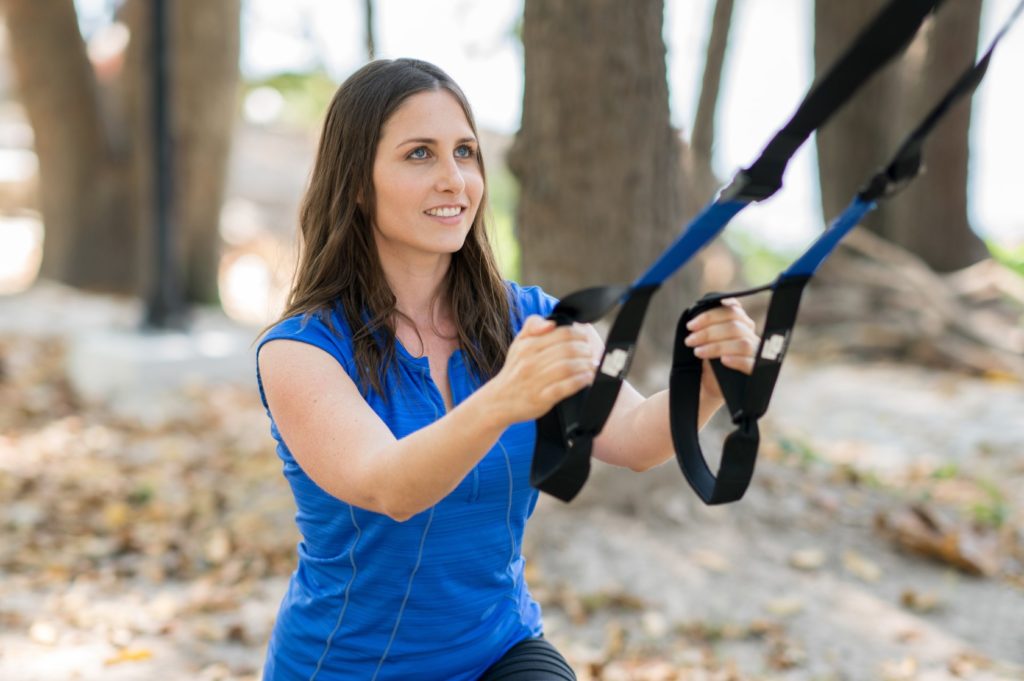When I open my inbox and see exercise questions from women with PCOS, it makes my day, because it means that more and more cysters are taking their health into their own hands by breaking a sweat.
I want to help each of you get amazing results from your workouts, so I’ve put together a quick list of the most common PCOS exercise mistakes and how you can fix them right away.
Plus, I’m offering a special bonus with some great resources that will help you maximize your workout, including a DIY strength training guide. Grab it here.
1. Not Measuring Progress
At least once a week I get an email that says “I am working out, but it’s not working!” The first thing that pops into my head is
“Hmm, I wonder how she knows it’s not working? Where are the numbers? The clear proof that her hard work is not paying off?”
Numbers on the scale, personal observations, and how your clothes fit are all flawed forms of tracking progress. If you’re going to all the trouble of implementing an exercise or nutrition plan, it makes good sense to track accurately and measure your progress.
Why is this?
Humans are notoriously bad at self-assessing. We need to gather objective information to make the best decisions possible.
I’ve coached women who constantly change their diet and exercise plans because they are not “seeing results.” In reality, they were not properly tracking their progress and the constant changes to their programs were hurting their results.
I recommend using several forms of measurements to track progress because a new exercise program may not cause your scale weight to change right away. So, you need to be on the lookout for other signs of progress. For example, I have seen clients lose inches off her waist circumference while maintaining the same weight. That would indicate that she’s losing fat and gaining muscle. Thus, her body is changing, but her weight is not.
If your primary goal is fat loss, I recommend that you track your progress by taking body circumference measurements, body fat percentage, weight and progress pictures every two weeks.
Taking multiple measures of progress can also give you insights into your hormonal state. If you find that your body fat percentage and weight are dropping, but your girth measurements in certain areas remain the same, you might have a hormonal imbalance that needs to be addressed. For instance, low thyroid levels can cause fat deposits around the bra area as well as overall weight gain.
2. Following an Unrealistic Program
Your workout must fit into the time that you have no matter how small or large that window of opportunity is. When women with PCOS decide they want to get fit they almost always select an exercise program based on how much they want to workout and not on how much time they actually have to workout.
Nothing will discourage you and derail your progress faster than falling short of your unreasonable expectations. I’ve been there myself and it’s a nasty cycle of highs and lows. At first, you’re excited about a shiny new miracle workout, then you’re mad at yourself because you could not wake up at 4 am to spend an hour at the gym.
Skip this vicious cycle and get honest with yourself!
Do you have exactly 50 minutes between the time you wake up and when your kids come barreling into your bedroom? Great. Work with that 50 minutes!
You need to set aside time for transitioning from waking up to working out, a warm-up, the workout, a cool down, and time to transition to the next activity of the day. Make sure you’re committing to a program that will fit into your schedule by writing out a basic timeline like the one I have below:
7:00-7:10am | Wakeup and change
7:10-7:15am | Warm up
7:15-7:35am | Strength training circuit
7:35-7:40am | Cooldown
7:40-7:50am | Transition to next activity
You’ll notice that I did not include time to get to and from the gym. If you love going to the gym and have the time to do so, go for it. But if you’re pressed for time, your absolute best option is to work out from home. With just a few pieces of equipment, you can get fit without a gym membership.
3. Skipping Strength Training
I get it. You’re trying to lose weight and lower your male hormones, yet I stand here telling you to start building muscle mass. It seems counterintuitive, but gaining muscle helps women with PCOS lose weight and manage other symptoms.
First of all, I want to address concerns that strength training can increase androgen production. As far as I can tell, no one has ever attempted to study androgen response to strength training in women with PCOS. Studies conducted on the general population have not come up with conclusive results on this either. However, not a single study has found that women’s testosterone becomes perilously high as a result of strength training.
Physicians who specialize in PCOS recommend strength training because it is a proven method of managing insulin resistance, belly fat, and obesity. Strength training is more likely to improve your hormonal balance than make it worse.
If you’re new to strength training, it can be a little intimidating. I’ve put together a DIY strength training guide. This will help you learn some of the basics.
4. Trying to “Burn Calories”
It is true that exercise burns calories. Exercise enough and you’ll burn enough calories to lose weight. But exercise’s role in weight loss is not that simple.
Overeating is easy to do, and burning off an over-indulgent diet is extremely difficult. The goal of your exercise program should never be to “burn off” the bad nutrition choices you’ve made!
So what does exercise do for you if it is not that great at burning calories?
It stimulates physiological changes in the body that will enhance your health and make it is easier for you to stay lean.
Your workout is not a magic wrecking ball you can use to knock out that extra glass of wine or the slice of cake you had on Friday night. It is the shovel you use to dig a strong foundation for good health and a fit body.
Once I was able to understand this concept, my relationship with exercise and with food changed completely! Food is no longer the enemy and exercise is not a punishment. Now I get real joy from working out and eating balanced meals.
To make the most out of every workout track your progress, set a realistic schedule, include strength training, and focus on improving your health rather than burning calories. Correcting these four common mistakes will help you become stronger than PCOS.
Remember to get my strength training resources bonus if you’re looking to get the most out of your workouts, track your process, and even learn about the best pieces of home equipment.





